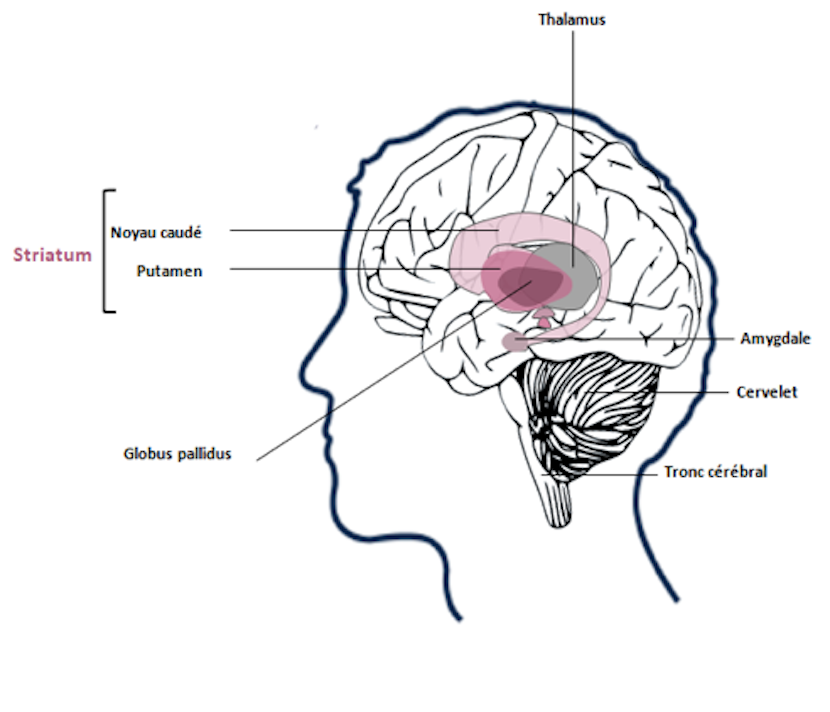The expansion consists of an abnormal repeat of a triplet of CAG nucleotides in the DNA on chromosome 4. A copy of the protein becomes abnormal and probably toxic to cells when the number of CAG repeats exceeds 35. The huntingtin protein, whose essential role is to enable neurons to survive, is not enough to prevent the disease from manifesting itself. The areas affected by atrophy during the course of the disease are the cortex and striatum, brain areas involved in motor, cognitive and behavioural functions.
Huntington’s disease affects the cortex and striatum, which are involved in motor, cognitive and behavioural functions.

At the Paris Brain Institute
The study of the asymptomatic phase of Huntington’s disease is a major focus of the “Fundamental and Translational Neurogenetics” team co-directed by Prof. Alexandra Durr. Huntington’s disease patients are born with the expansion, yet they do not develop symptoms until decades later. What happens in the meantime?
Active collaboration between the clinician-researcher and Dr Sandrine Humbert at the GIN in Grenoble, which showed that cerebral anomalies were already present in the foetal state. However, the disease does not manifest itself from birth.
There are therefore signs of cellular damage in the foetus, but no clinical damage in children and adolescents, and clinical signs appear in adulthood. There therefore appears to be transient compensation for the deficits. The aim of Alexandra Durr’s team is to understand the mechanisms involved during the non-symptomatic period of the disease, in the hope of activating compensatory processes to delay the onset of the disease.






